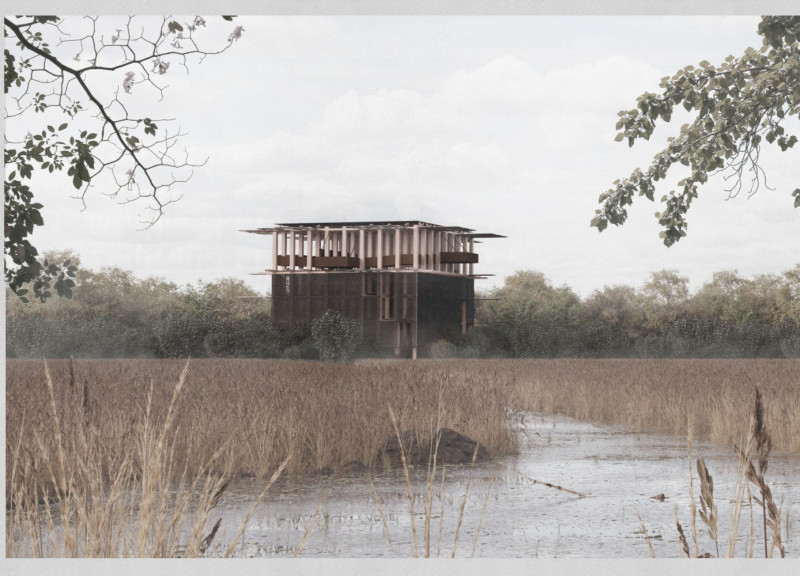5 key facts about this project
This architectural project serves multiple functions, providing spaces for [insert types of activities, such as public gathering, work, leisure, etc.]. Its layout has been meticulously crafted to facilitate both personal and communal experiences, adapting to the diverse needs of its users. By utilizing an open-plan approach, the design fosters connectivity while ensuring that different areas can serve distinct purposes without compromising the overall flow of the space.
The heart of the project lies in its innovative use of materials, which contribute to both the visual appeal and the structural integrity of the building. The careful selection of concrete, glass, wood, brick, and metal speaks to a commitment to durability and environmental awareness. Each material plays a crucial role; for instance, glass walls create transparency, allowing natural light to permeate the interior, while concrete provides a solid foundation and an urban feel. Wood elements add warmth, making the spaces inviting and comfortable, while brick introduces a sense of tradition and durability. Metal accents may also be incorporated, offering a modern touch that enhances the building's overall character.
Unique design approaches are evident throughout the project, underscoring the architect’s vision and creativity. The integration of green spaces within and around the structure reflects a growing trend towards sustainability in architecture. By incorporating plants, gardens, or green roofs, the design not only beautifies the project but also contributes to biodiversity and enhances air quality. Additionally, the layout takes advantage of natural topography, seamlessly blending the structure into its environment. This mindful interaction with the landscape demonstrates a thoughtful consideration for ecological impact and community well-being.
Moreover, the architectural design promotes social interaction through communal spaces that are strategically placed to encourage gatherings and collaborations. Areas such as plazas or courtyards serve as focal points for community engagement, creating a dynamic atmosphere where individuals can come together. The attention to detail in these spaces—through seating arrangements, landscaping elements, and accessibility—ensures that they cater to a wide array of activities, from casual meetings to organized events.
An exploration of the project’s architectural plans, sections, and overall design reveals the meticulous thought invested in every element. From the initial sketches to the final outcome, the design journey illustrates how architectural ideas can evolve while remaining true to their core principles. The careful consideration of spatial relationships and the functional layout is evident, showcasing an in-depth understanding of how users will interact with the environment.
This project is a compelling representation of contemporary architecture, demonstrating not only the aesthetic possibilities but also the potential for buildings to serve as vibrant, functional spaces within their communities. The commitment to integrating sustainable practices and fostering a sense of community marks it as a notable contribution to the architectural landscape of [Location]. For those intrigued by the nuances of this project, further exploration of its architectural plans, sections, and designs will reveal the depth of thought and creativity that underpin this significant architectural venture. Engaging with the details of the project presentation promises richer insights into the architectural approaches employed, their inspirations, and the thoughtful execution of design ideas that shape this remarkable space.


























